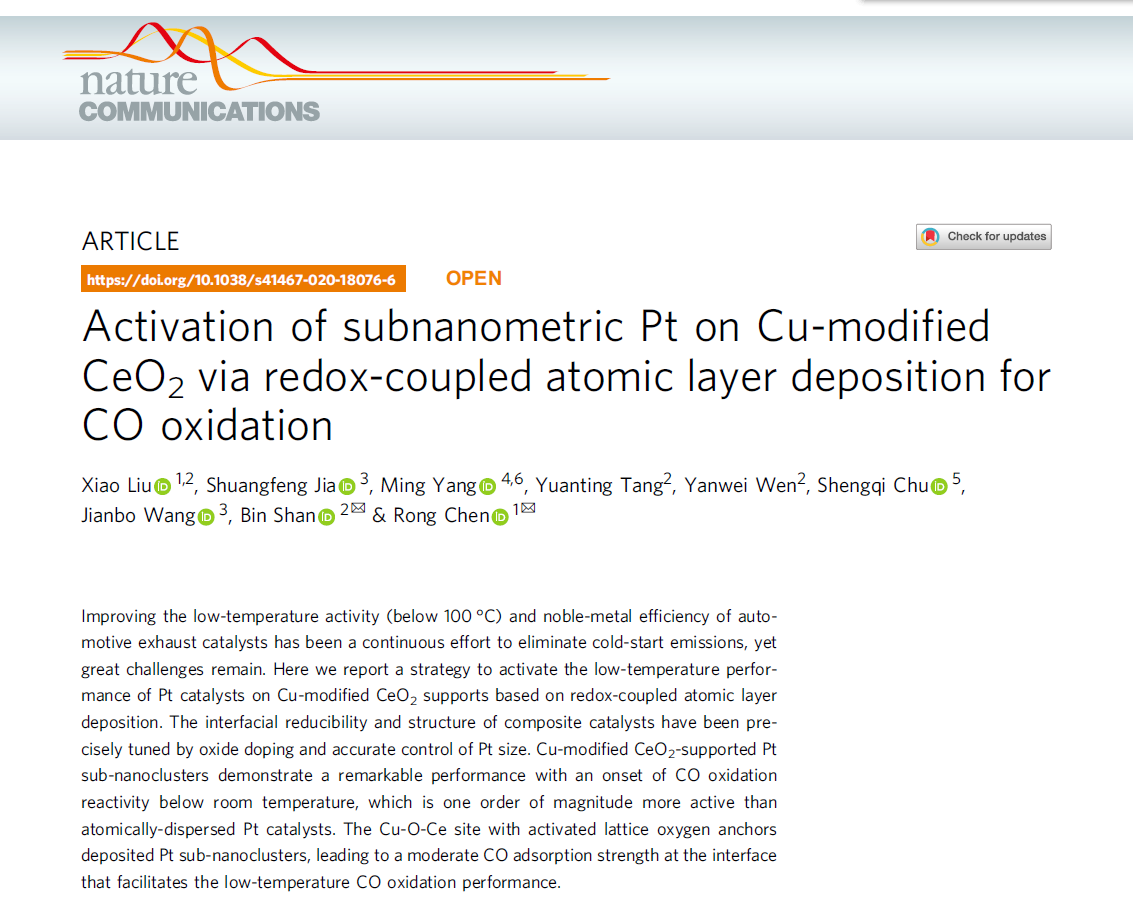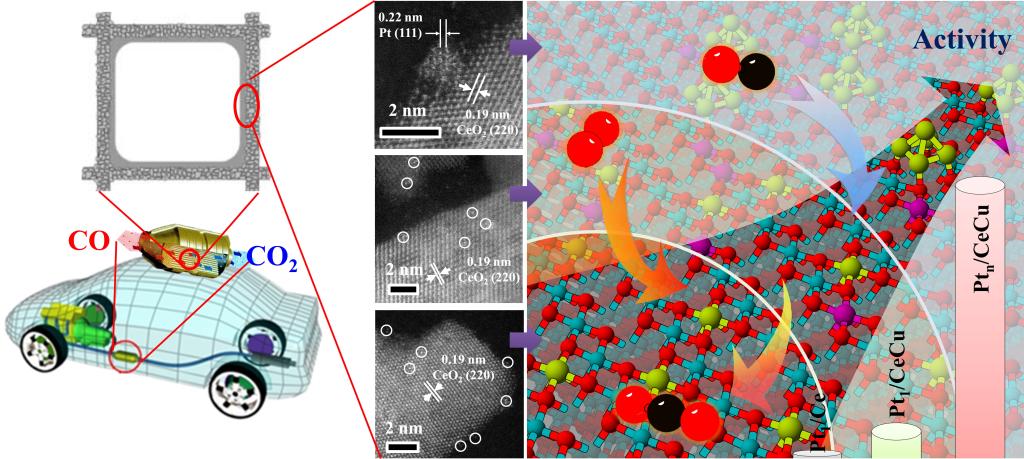On August 25th, Nature Communications published online the latest research findings of MSE Professor Chen Rong’s team on noble-metal/ oxide interface fine manufacturing titled “Activation of subnanometric Pt on Cu-modified CeO2 via redox-coupled atomic layer deposition for CO oxidation”. MSE was the first unit among the paper author affiliations. MSE lecturer Liu Xiao was the first author, while Prof. Chen Rong of MSE & Prof. Shan Bin of School of Materials Science and Engineering, HUST were corresponding authors.

The fuel economy of vehicles has been greatly improved with the development of turbocharged engines, exhaust heat recovery systems and hybrid powertrains. Due to the much lower exhaust temperature in these vehicles, aftertreatment catalysts must work efficiently at low temperatures for the recirculation usage of exhaust gas. The general consensus is that the next generation catalyst must be active in the sub 100℃ range to reduce or eliminate cold-start emissions. To meet the requirement for >90% abatement of emissions (CO, HC, and NOx) at 150℃, the challenge is to develop highly efficient catalysts at low temperatures. Despite considerable progress made in low-temperature exhaust catalysts, such as Au nanoparticles and Co3O4, the harsh working environment of automotive catalysts would severely deteriorate the stability of such nanocatalysts. By far, Pt is still the most widely used catalyst component in the exhaust cleaning system due to its excellent reactivity and chemical stability.

The team report a strategy to precisely control interfacial structures of CeO2 supported Pt catalysts by coupling oxide doping and Pt size control via a redox-coupled ALD method. The remarkable performance with an onset of CO oxidation reactivity below room temperature and turnover frequency (TOF) of 0.26 s−1 at 80 °C is demonstrated for the Cu-modified CeO2 supported Pt sub-nanoclusters. Both experimental and theoretical results reveal the finely constructed interface composed of Cu–O–Ce site and with deposited Pt sub-nanoclusters contributes to the bifunctional active site, with enhanced lattice oxygen activity and moderate CO adsorption strength activating the low-temperature catalytic performance.
This work was supported by the National Natural Science Foundation of China and National Postdoctoral Program for Innovative Talent.
Link of the Paper: https://www.nature.com/articles/s41467-020-18076-6